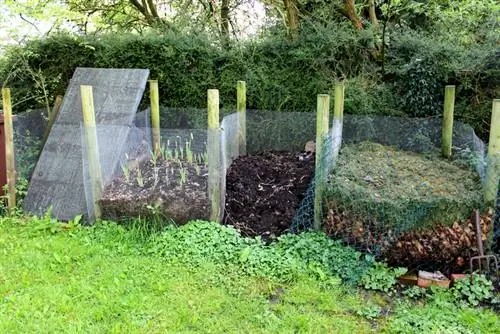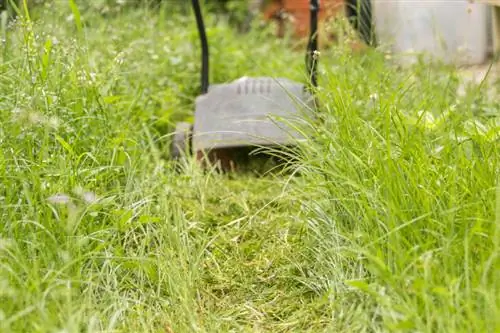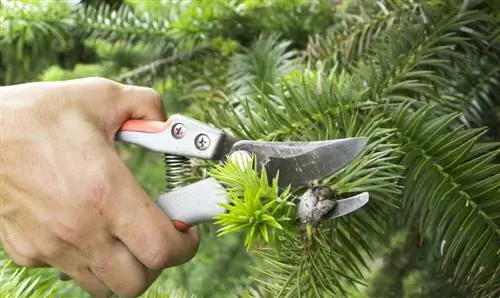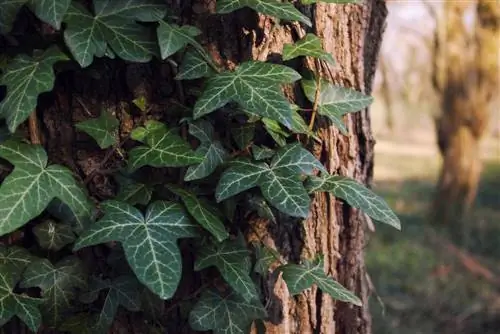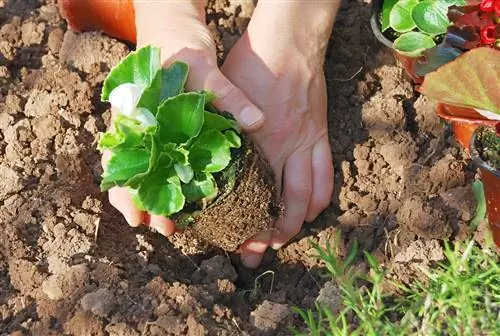- Author admin [email protected].
- Public 2023-12-16 16:46.
- Last modified 2025-01-23 11:20.
When cutting back ivy, large amounts of clippings are often produced. For the hobby gardener, the question arises as to how best to dispose of the cuttings. Compost is not always the best option. Here ivy finds ideal conditions for new growth.
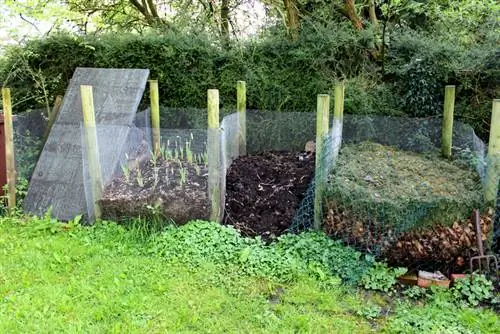
Can you dispose of ivy in the compost?
Ivy on the compost is not always ideal as it can quickly re-sprout. To properly compost ivy, you should only use tendrils without adhesive roots, avoid ivy with berries and let the tendrils dry beforehand. Then cover with a thick layer of green material.
That's why ivy doesn't necessarily belong in the compost
Ivy is very robust and resilient. The climbing plant quickly forms new roots if the conditions are right. The young roots find good support in the compost so that new plants can develop.
It's also of little use to chop or chop the tendrils. Even small pieces produce offshoots.
If you want to be absolutely sure that ivy doesn't spread further in the garden, it's better to pack it in organic garbage bags and have it disposed of through the garbage disposal. An alternative is the collection point for green waste, which is offered in many cities.
Compost ivy properly
If you want to compost ivy, you should only store tendrils there that have not formed any adhesive roots. Under no circumstances should ivy be added to the compost if it has berries. You can use the berries to spread the climbing plant throughout the garden.
Allow ivy vines to dry for a few days before adding them to the compost. You can leave them on stone slabs or the terrace - provided that neither small children nor pets come into contact with the cuttings.
If possible, pour a thick layer of other green materials over the ivy, such as grass clippings. Then the tendrils decompose more quickly and no roots form due to the heat of the decomposition process.
Always wear gloves and a dust mask when chopping ivy
When cutting ivy vines or chopping them after cutting, always wear gloves. The plant contains toxins that can cause inflammation on bare skin.
Cutting and chopping also release tiny particles that get into the respiratory tract and can cause problems. To be on the safe side, wear a dust mask when carrying out such work (€30.00 on Amazon).
Tip
Another way to compost ivy is to spread the vines under shrubs as a substitute for mulch. However, the cuttings must be thoroughly dried. Ivy with berries is not suitable for this.

